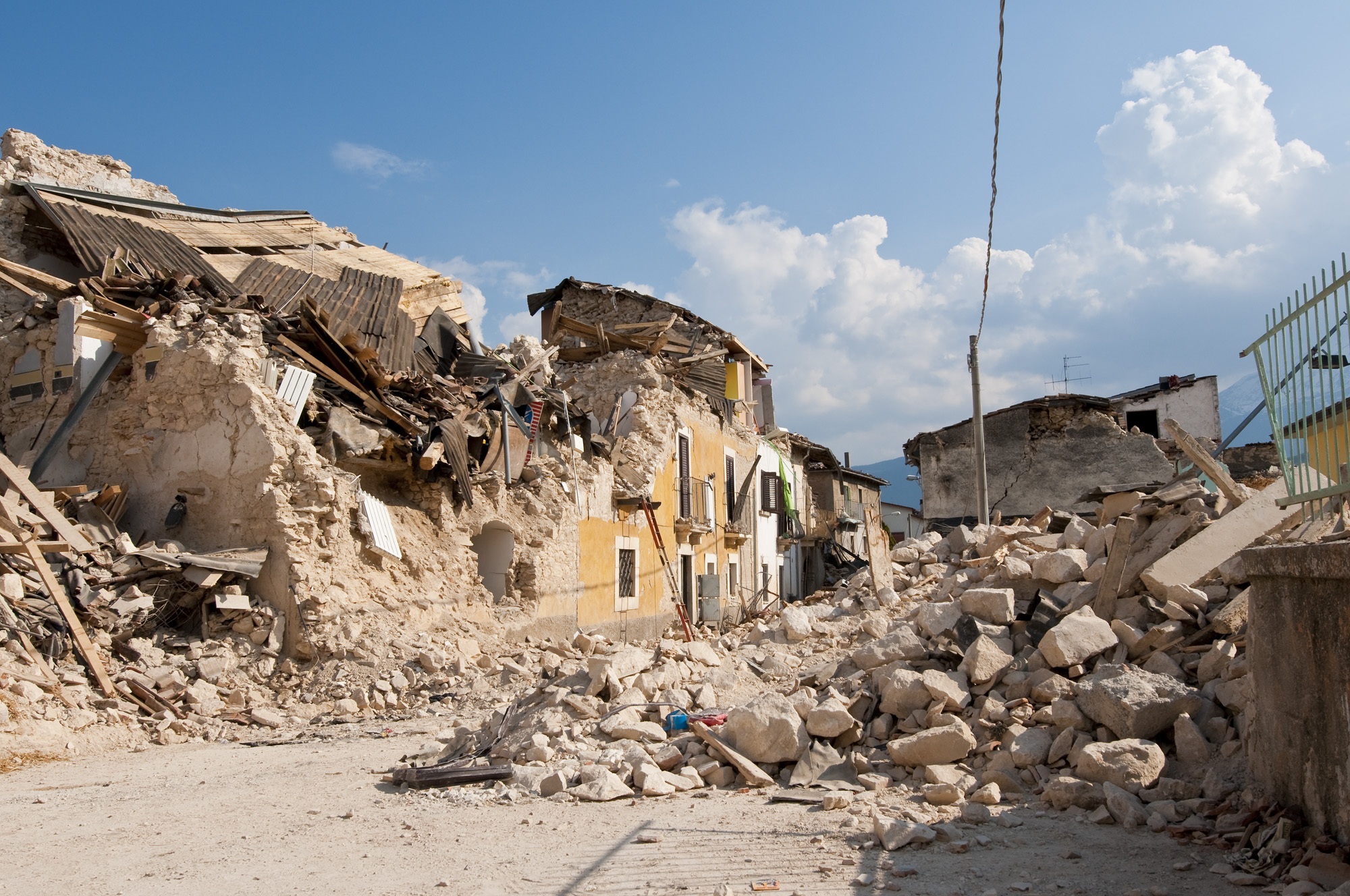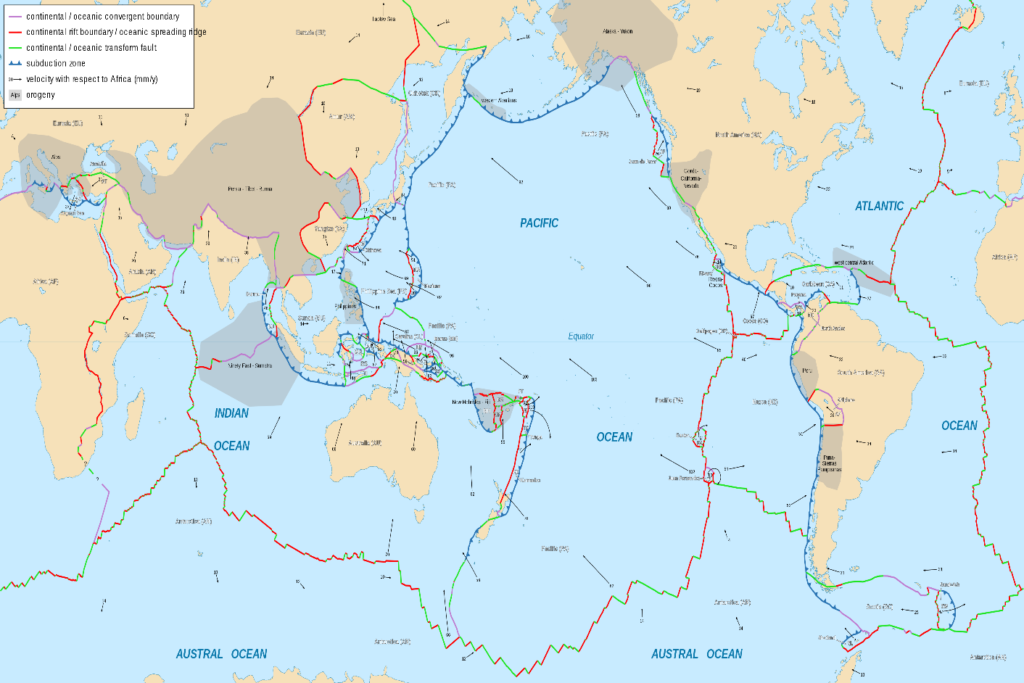Evacuations from High-Risk Locations Call +44 (0)1202 308810 or Contact Us →
Top Tips on What to Do During an Earthquake

It is estimated that as many 500,000 earthquakes occur every year with 100,000 able to be felt by humans. In certain places, minor earthquakes occur almost constantly. As the map below shows, tectonic plates are located all over the world. The most famous and impactful area for earthquakes is the so-called ‘ring of fire’ in the Pacific Ocean; about 90 per cent of all the world’s earthquakes occur in this area.
Most earthquakes are natural occurrences but human development has had an impact. The construction of dams and the impact of fracking for gas are thought to cause earthquakes or at least increase their impact.
Most earthquakes are natural occurrences but human development has had an impact. The construction of dams and the impact of fracking for gas are thought to cause earthquakes or at least increase their impact.
It has been estimated that on average, there are 18 major earthquakes every year (those registering 7.0-7.9 on the Richter scale) and one great earthquake (those register 8.0 and above). Unlike volcanoes or tropical storms, scientists have found it impossible, at this point, to predict when an earthquake will occur.

What to Expect
Small to Moderate Earthquakes
Seismic movements which are lower on the Richter Scale can occur across the world, including in places like the United Kingdom, which is not on or near any tectonic plates. These earthquakes do not represent an emergency risk. When such quakes occur, you can expect:
- Shaking to occur for only a few seconds.
- Lights to move and some minor movement of objects to occur inside buildings.
- To feel a small amount of shaking under your feet if outside.
- To hear a bang if very close to the epicentre
Large Earthquakes
The impact on larger earthquakes, which includes everything from 5.0 on the Richter Scale, largely depends on where they occur and at what depth. Their impact may be felt for several minutes. However, in general when they do occur, you can expect the following.
- The ground to potentially shake violently, in some cases strong enough to knock you off your feet.
- To probably feel shaking followed by a sea-like rolling motion.
- Buildings may sway and the earthquake is likely to cause a roaring sound.
- To feel swaying if in the upper floors of a high-rise building.
- Furniture and fixings may be thrown across the room, especially if unsecured, and windows may break.
- It is possible that fire systems will be triggered with sprinklers and alarms activated.
- You can also expect lights and power to go off.
What to do during an earthquake if you are inside
The first thing to do during an earthquake tremor is to drop to your hands and knees so the earthquake does not knock you down. You should then cover your head and neck with your arms as protection from falling debris.
You should then look for cover, if you can move safely; a sturdy table is suitable, hold on to the legs so that it stays over you to offer protection from falling objects. If this is not available, crawl away from outside walls and next to inside walls away from windows or any fixtures or furniture which could fall on you. Remember: ‘drop, cover, and hold on’
If you are in bed when the earthquake occurs you should stay in bed and cover your head and neck with a pillow unless there is something overhead that could fall on you and cause injury. At night, it is difficult to see any hazards or debris which have emerged and attempting movement in the darkness may result in further injuries.
If you are in a lift get off at the next available floor and find cover.
Stay inside, do not rush to get outside and await the end of the tremors.
What to do during an earthquake if you are outside:
If you are outside when shaking occurs, get to open space away from buildings, street lights, bridges/flyovers and overhead wires. Once in the open, you should ‘drop, cover, and hold on’. Then await the end of tremors.
If you are in a moving vehicle during an earthquake:
If driving when tremors begin, stop as quickly and safely as you can and apply the handbrake. Be aware of areas of potential landslides. Avoid stopping near buildings, trees, bridges, overpasses, and overhead wires. Once the earthquake tremors cease, proceed cautiously, avoid roads, bridges, and other infrastructure which may have been damage by the earthquake.
If you are trapped during an earthquake:
If the worse happens and you become trapped it is important to remain calm and not move about or kick up dust. If you have a phone, try to use it to call for help. If possible, try tapping on a pipe or use a whistle so rescuers can locate you. Shouting should be a final measure taken as it is important to not inhale too much dust and debris.
If you are not trapped when tremors stop:
When shaking stops, leave the building if it is safe to do so and get to an open space away from any damaged areas.
If the building is undamaged, check for the smell of gas, turn it off at the main valve. If wiring is damaged turn that off at the main switch board. Check for fires and evacuate the building if they are many or too large to safely extinguish.
Monitor local media through any means for information and instruction.
Check for any injuries and give treatment (provided you are trained to do so). Then assist with rescues if it is safe to do so.
Be prepared for a tsunami in coastal areas, learn if the area you are in is usually impacted by post-earthquake tsunamis. A strong earthquake that lasts more than 20 seconds in a tsunami zone will mean evacuation is imperative. If this is the case, once shaking has stopped, move inland and to higher ground immediately and continue to monitor for local instruction or evacuations. If you can see the waves you are still too close. Remain on high ground, tsunami waves can last up to 8 hours or longer, only return when officials say it is safe to do so.
Maintain extreme caution in post-earthquake clean-up. Do not remove heavy debris alone and remember to use appropriate clothing and tools.
Be ready for aftershocks and be prepared to ‘drop, cover, and hold on’, should they occur.
Most earthquake-related injuries are caused by collapsing walls, objects falling, or glass shattering, rather than ground vibrations directly causing injury.